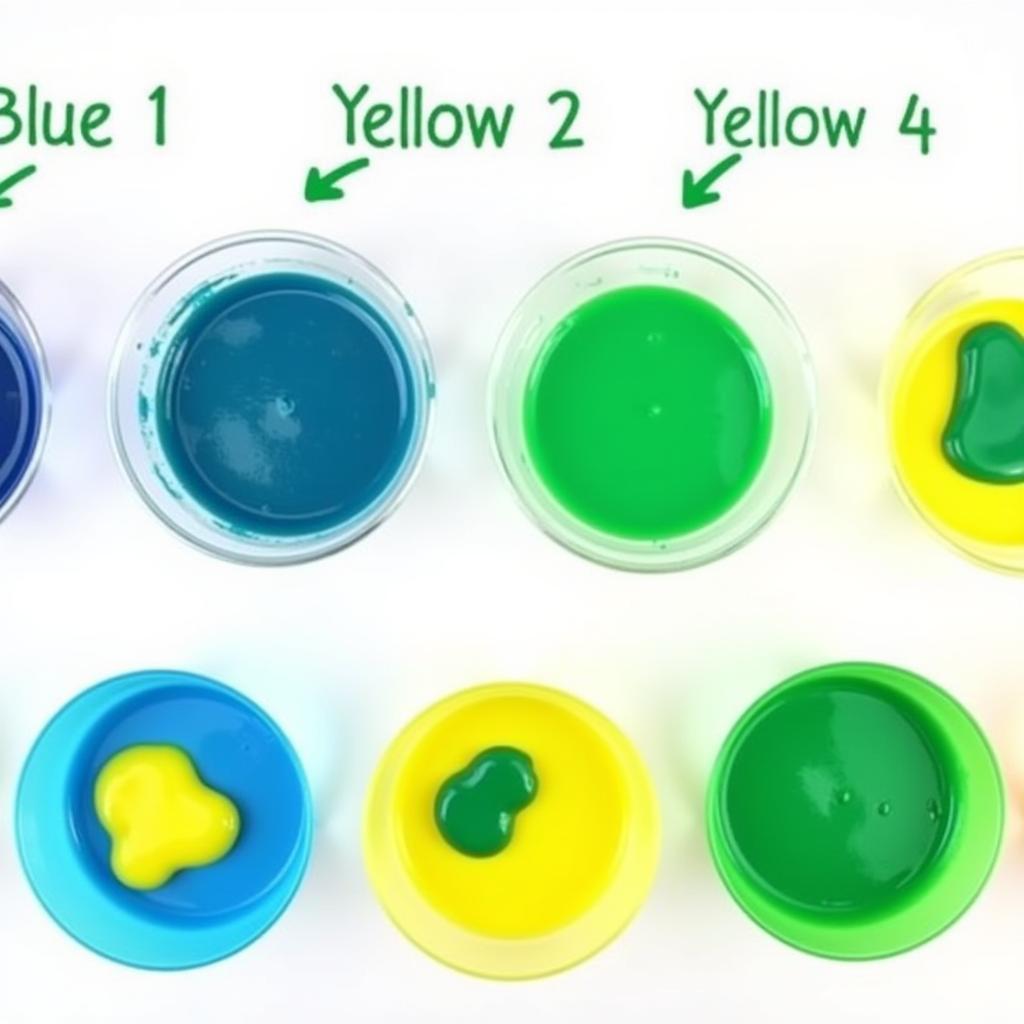Creating vibrant green hues with food coloring is a simple yet effective way to enhance your culinary creations, from frosting and icing to batters and doughs. Whether you’re aiming for a delicate pastel green or a rich, deep emerald, mastering the art of green food coloring opens up a world of possibilities for adding a touch of color to your cooking.
Understanding the Basics of Green Food Coloring
Making green with food coloring might seem straightforward, but there’s a subtle art to achieving the perfect shade. It involves understanding the color wheel and how primary colors combine to create secondary colors. In this case, we’re focusing on blue and yellow, the building blocks of green. The ratio of these two colors will dictate the final green hue you achieve. More yellow results in a lighter, lime-like green, while more blue creates a deeper, teal-like shade. Remember, start with small amounts of food coloring and gradually add more until you reach the desired intensity. Overdoing it at the start can lead to a color that’s too dark and difficult to adjust. For those looking for natural alternatives, you can explore options like how to make green food coloring naturally.
 Creating the Perfect Green Food Coloring with Blue and Yellow
Creating the Perfect Green Food Coloring with Blue and Yellow
Achieving Different Shades of Green with Food Coloring
The versatility of food coloring allows you to create a wide range of green shades. From a soft mint green for spring-themed treats to a deep forest green for festive holiday cookies, the possibilities are endless. Achieving specific shades requires precise mixing, so it’s always a good idea to experiment on a small batch before adding the color to your entire recipe. Looking for specific frosting colors? Check out how to make green frosting with food coloring. For those interested in achieving a darker green, how do you make dark green with food coloring provides helpful tips and tricks.
How do I make light green with food coloring?
To make a light green, start with a larger proportion of yellow food coloring and gradually add small drops of blue until you achieve the desired lightness.
How can I make dark green food coloring?
Dark green requires a higher ratio of blue to yellow. Start with blue and slowly incorporate yellow until you achieve the desired depth. You can also try adding a tiny drop of black for an even richer tone.
Tips and Tricks for Using Green Food Coloring
Working with food coloring can be a bit messy, so it’s helpful to have a few tricks up your sleeve. Use toothpicks to add small amounts of color for precise control. Wear gloves to avoid staining your hands. And remember, gel food coloring tends to be more concentrated than liquid, so adjust your measurements accordingly. This is particularly important when making frostings, as discussed in how to make dark green frosting with food coloring. For those seeking alternatives to traditional spinach-based green coloring, check out how to make green food coloring without spinach.
“When working with green food coloring, always remember that less is more,” advises renowned pastry chef, Amelia Dubois. “Start with a tiny amount and gradually build up the color. This gives you much more control over the final shade.”
What if my green is too blue?
If your green turns out too blue, simply add a few more drops of yellow to balance the color.
How do I fix green food coloring that’s too yellow?
If your green appears too yellow, add small drops of blue until you reach the desired green shade.
“Patience is key when mixing food coloring,” adds culinary artist, Julian Martinez. “Don’t rush the process. Take your time and observe how the colors blend together.”
Conclusion
Mastering the art of how to make green color with food coloring is a valuable skill for any aspiring baker or cook. By understanding the basic principles of color mixing and following these simple tips and tricks, you can unlock a world of creative possibilities and transform your culinary creations into vibrant masterpieces.
FAQ
- What colors make green food coloring? Blue and yellow.
- Can I use natural ingredients to make green food coloring? Yes, spinach, spirulina, and matcha are some natural alternatives.
- What type of food coloring is best for making green? Gel food coloring is generally more concentrated and vibrant.
- How do I avoid staining my hands when using food coloring? Wear gloves.
- What should I do if my green is too dark? Try adding a small amount of the original batter or frosting to lighten the color.
- How can I make a pastel green with food coloring? Start with a very small amount of blue and yellow and gradually add more until you reach the desired pastel shade.
- What’s the best way to store leftover food coloring? Store in airtight containers in a cool, dark place.
Need assistance with your color projects? Contact us at Phone: 0373298888, Email: [email protected] or visit our office at 86 Cau Giay, Hanoi. Our 24/7 customer service team is ready to help.
